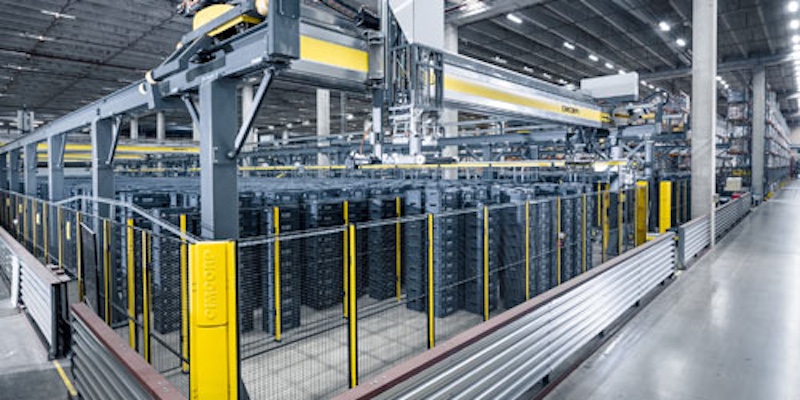
Cimcorp promotes sustainable supply chains through automation
Cimcorp, a specialist in robotic handling solutions, is helping customers in its core sectors, the fresh food and tire industries, achieve their sustainability goals through automation.
When installed within tire factories and grocery distribution centers, Cimcorp’s automated material handling solutions enable greater energy efficiency, significantly reduce waste, and support greener overall supply chain operations.
Adam Gurga, national manager of grocery and retail partnerships, Cimcorp, says: “Sustainability is increasingly important in both of our key sectors: grocery retail and tire manufacturing.
“These industries face growing pressure from consumers, shareholders, and governments alike to limit natural resource consumption and reduce waste across the supply chain. And one of the best ways to create more eco-friendly production, warehousing, and distribution operations is through automation.”
Cimcorp’s advanced robotics and intelligence software are designed with sustainability in mind. By leveraging Cimcorp’s solutions, clients benefit from:
Energy efficiency
Cimcorp’s gantry robot solutions offer low energy consumption. The structure of each gantry robot is formed from aluminum, making the robots lightweight yet robust.
They accelerate and move fast, optimizing the potential handling capacity for products moved in the distribution center.
Cimcorp’s gantry robots can carry multiple crates or cases simultaneously, instead of just one. Cimcorp’s crate solutions can carry a maximum of 250 kilograms at a time and can create stacks up to 2.5 meters tall.
High volumes can be moved and handled quickly and efficiently. In addition, Cimcorp’s gantry robots reuse energy through regenerative braking.
Braking energy is recovered to the power grid, making the robots even more energy efficient. Approximately 30 percent of energy is gathered and fed back.
Optimized truckloads
Cimcorp’s Warehouse Control System (WCS) optimizes the loading of delivery vehicles, helping customers utilize truck space more efficiently.
Space optimization creates fuller trucks, so fewer trucks are needed. This leads to fewer miles being driven, less pollution and exhaust fumes, and a greener supply chain.
Reduced food waste
In grocery retail, the longer it takes fresh food to travel through the supply chain, the higher the chances of spoilage and waste.
By optimizing distribution operations, grocery retailers can move produce from field to store in half the time. Today, Cimcorp has successfully accelerated distribution for grocery retail customers around the world.
For example, Cimcorp’s solutions are helping Mercadona, Spain’s biggest grocery retailer, move produce to stores in under 24 hours.
Reusable packaging
Cimcorp’s solutions are designed to match perfectly with reusable plastic crates (RPCs), which many modern grocers are now choosing over cardboard options.
RPCs can be used thousands of times, replacing cardboard boxes as the method of transport for fresh produce from the farm to the store shelf. RPCs have a long and sustainable life cycle, since they can be used over and over again from field to warehouse.
Minimized scrap
In tire manufacturing, automated tire handling significantly reduces scrap in all process areas. With Cimcorp’s Warehouse Control System (WCS), tire manufacturers can minimize intermediate storage and avoid unnecessary scrapping of materials.
If there is any disruption to the manufacturing process, all individual tire components can be tracked and traced to avoid scrapping of the whole inventory.
Gurga says: “As a trusted partner for grocery retailers and tire manufacturers around the world, we’re proud to help our clients strategically plan and automate their warehousing and distribution operations so they can get more out of less.
“For any company looking to reduce their supply chain’s environmental impact, automation is a great step towards a greener future.”

